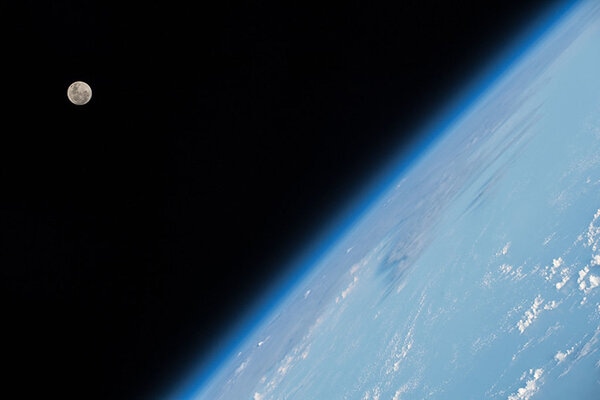Theme
This paper analyses the common and divergent interests of Japan and the EU in the Indo-Pacific and identifies the most promising areas for cooperation.
Summary
In recent years, the EU-Japan partnership has been flourishing. Europe has reassessed the strategic importance of the Indo-Pacific area for its interests, hence deepening its convergence of views with Japan, which champions a Free and Open Indo-Pacific. Both the EU and Japan indeed share an interest in acting as responsible stakeholders in an area where the future of the world order is likely to be determined. While the objectives of the EU and Japan in the Indo-Pacific are quite similar, their priorities are not the same. The respective relations of Tokyo and Brussels with Washington and Beijing induce different type of behaviours, complicating a potential coordination. A sobering assessment of convergences and divergences, priorities and capabilities should prevent expectation gaps. Efforts should be made in a limited number of areas –maritime security, connectivity, the rule of law and governance of the commons– to harvest low-hanging fruits in terms of cooperation.
Analysis
Introduction
In recent years Europeans have reassessed the strategic importance of the Indo-Pacific. Several member states (France, Germany and the Netherlands) have already published their own approaches and an Indo-Pacific outlook or strategy for the EU is now being discussed in Brussels. This development confirms the convergence of views and interests with Japan, which has been rolling out its vision for a Free and Open Indo-Pacific (FOIP) since 2016. As a result, promoting bilateral cooperation in the Indo-Pacific has become one of the top priorities for the EU-Japan partnership, as reflected by the Third Meeting of the Joint Committee on the implementation of the Strategic Partnership Agreement (SPA) held on 26 February.
Indeed, Japan and the EU, two like-minded partners, are both committed to the multilateral rules-based order that is being challenged in the Indo-Pacific. They both recognise that their security and prosperity are dependent on the open and secure maritime routes running through the region and on the respect for the rule of law by all players. They thus share a fundamental interest in addressing the sources of instability in the Indo-Pacific by ensuring a balance of power, the maintenance of a law-based order and good governance. For that, they can build on their respective experiences in supporting connectivity and upholding maritime security in both the Indian and Pacific Oceans to further their cooperation.
While there are many common interests involved in acting in the region, there are also challenges. In particular, the EU and Japan are not located in the same part of the world and the differences in their perceptions of, and relations with, China and the US can cause unease. In particular, the EU’s ‘strategic autonomy’ has caused concern in Japan, which sees it as a potential impediment to shaping a coalition of like-minded countries in the Indo-Pacific region. Japan is also unsure of the EU’s definite stance on China, or on the sustainability of its future commitment to the Indo-Pacific.
Expectation gaps should thus be avoided at all cost by ensuring frequent consultations between the partners and through a thorough exchange of information to reach a common understanding of the situation in the Indo-Pacific. This paper suggests a number of areas –maritime security, connectivity, the rule of law and governance of the commons– to harvest the low-hanging fruits of cooperation and ensure the credibility and sustainability of a shared commitment to the Indo-Pacific.
Japan and Europe: converging interests in the Indo-Pacific
Both Japan and the EU now recognise the central importance of the Indo-Pacific for their economic and security interests. Back in 2016, Prime Minister Abe articulated his Free and Open Indo-Pacific (FOIP) vision, which takes stock of the economic and strategic integration of the vast area running from the eastern coast of Africa to the South Pacific. Importantly, FOIP is a flexible and evolutionary geopolitical narrative that offers an alternative to the Chinese Belt and Road Initiative (BRI), seen by Tokyo as a ploy for Beijing to expand its influence, revise the post-1945 world order and impose its own standards. Therefore, Japan’s vision for the region has three pillars: upholding the rule of law, freedom of navigation and free trade; the promotion of connectivity through infrastructure to achieve prosperity; and the contribution to peace and security through capacity-building, humanitarian assistance, disaster relief and anti-piracy operations.
The EU is still not officially using the term ‘Indo-Pacific’, but it nonetheless recognises that this vast region is now the world’s epicentre in terms of geoeconomics and geopolitics, in which any disruption directly impacts its key interests. In particular, Europe, as a trade powerhouse, has obvious interests in keeping the vital maritime routes to Asia open, secure and stable. The Indo-Pacific is also the central stage of the Sino-US geostrategic competition that will shape the future world order. In this context, the EU wants to ensure that the power shift will not lead to a new order that will be detrimental to its interests. In addition, a multipolar region should be fostered to mitigate the negative effects of great-power rivalry. Finally, as a normative power, the EU cares about maintaining a multilateral, rules-based order that is one of the key conditions of its prosperity.
Therefore, the EU has taken a series of step to demonstrate a more consistent posture in Asia, beginning with the publication of its EU-Asia Connectivity Strategy and its commitment to enhance its security cooperation in and with Asia (2018). The March 2019 Strategic Outlook qualifying China as a partner, competitor and systemic rival pointed to a more strategic posture vis à vis Beijing. Brussels has also made efforts to deepen its relations with its local partners: Japan, but also India, South-East Asian countries, ASEAN and others. France, Germany and the Netherlands have already adopted their own Indo-Pacific strategies and encourage the EU to design its own Indo-Pacific outlook. Such a document would allow Brussels to articulate a clear strategic vision that encompasses its various initiatives in the region and clearly positions the EU as a relevant actor in the context of Sino-US rivalry. As the EU devises its approach, its convergence with Japan’s vision has been made evident by the invitation extended to the Japanese Foreign Minister Motegi to present Tokyo’s FOIP to the EU’s Foreign Affairs Council.
In addition to these convergent interests, the institutionalisation of the EU-Japan partnership since 2018 is providing a solid ground for the two players to expand their cooperation in the Indo-Pacific. Their Economic Partnership Agreement (EPA) aims not only to show their commitment to free trade, but also to set high-level norms and standards and write the ground-rules following the Trump Administration’s withdrawal from the Trans-Pacific Partnership (TPP). The Strategic Partnership Agreement (SPA) is a broad framework to enable the promotion of their shared values (democracy, human rights, the rule of law and so on) on the international stage in a variety of domains. Their Partnership on Sustainable Connectivity and Quality Infrastructure (2019) shows the synergy between the EU-Asia Connectivity strategy and Japan’s Partnership for quality infrastructures. The EU-Japan strategic partnership is thus, in itself, a key instrument to uphold a multilateral rules-based order and to induce disruptive powers, such as China, to play by the rules. In the Indo-Pacific the convergence is particularly salient as regards the promotion of the rule of law, the strengthening of maritime security and the support for connectivity.
As Sino-US rivalry deepens, Japan’s expectations for an enhanced European commitment in the Indo-Pacific have been growing. Tokyo and Brussels both consider that a Sino-US confrontation is detrimental to their interests, they want to mitigate its negative side-effects. In particular, they want to avoid a complete economic decoupling with China, while at the same time being able to protect and place restrictions on Chinese practices in strategic sectors. Japan and the EU both want to keep a conditional engagement with China, and strive to uphold a rules-based system to integrate Beijing in it, or to constrain inappropriate Chinese behaviour. Finally, they want to offer an alternative to countries that do not want to choose sides between China and the US, such as those in South-East Asia, and contribute to building up their resilience. Despite this underlying convergence of views, EU and Japanese interests and priorities are not aligned.
Potential challenges: the EU’s strategic autonomy and differing priorities
While the objectives of the EU and Japan in the Indo-Pacific are quite similar, their priorities are not the same. In particular, Japan is placing an emphasis on addressing the Chinese challenge and coordinating with its US ally, while the Europeans are focusing on fostering a multilateral, multipolar, rules-based order. Similarly, the respective relations of Tokyo and Brussels with Washington and Beijing are not the same, thus inducing different types of behaviour, complicating potential coordination.
Japan has some concerns about the EU’s attempts to assess its strategic autonomy. Tokyo worries that the ‘Sinatra doctrine’ presented by the HRVP Borrell to explain that the EU should go its own way in the context of Sino-US rivalry, would lead, in a worst-case scenario, to an equidistant position between the US and China. The preliminary signing of the Comprehensive Agreement of Investment (CAI) with China last December sparked controversy as it contradicted Japanese expectations of an EU becoming less naïve and more ‘strategic’ in respect to China. The unfortunate timing of the CAI could give the impression that the EU prioritises its economic interests over values. In Tokyo’s eyes, the EU’s striving for strategic autonomy has also been perceived as a hindrance to shaping a coalition of like-minded countries in the Indo-Pacific region.
Conversely, the Europeans can have the feeling that Japan’s priority is to accommodate its US ally, sometimes to the detriment of bilateral coordination in promoting an ambitious global agenda. This was the case especially under the Trump Administration, when European and US interests clearly diverged on issues such as trade and climate change. This kind of tension should (at least partly) ease under the more accommodating Biden Administration, but because Japan is directly threatened by Chinese maritime expansion, keeping its alliance with the US alive and well and ensuring a persistent and credible US security commitment in the region will continue to be vital priorities for Tokyo.
While Japan’s other priority is to check and balance China, it is actively encouraging Europe to adopt a tougher position on Beijing and to upgrade its commitment in the Indo-Pacific. Of course, Europe is not located in the same part of the world, and while it is aware that its security interests are impacted by developments in the Indo-Pacific, its strategic priorities and urgencies are inevitably located in its direct neighbourhood. Just like Japan, Europe also need to ensure a continuous US security commitment, this time to check Russia and help fight instability and terrorism in the Middle East and Africa.
Differing priorities should be acknowledged to prevent misunderstandings and to identify priority areas of cooperation to develop the partnership in an efficient manner. The gap in expectations gap and perhaps even feelings of over-expectation are detrimental because they can give rise to stumbling blocks and can hinder effective cooperation. The lack of specific achievements can, in turn, weaken the credibility of the commitment and the partnership.
Priorities, capacities and expectations should thus be assessed soberly. Both Japan and the EU need each other in the Indo-Pacific in the context of Sino-US competition. The US will exert growing pressure on Europe to uphold a multilateral rules-based order in the Indo-Pacific. It also needs EU cooperation to level out the playing-field with China, and ultimately move ahead of Beijing (in Biden’s vision). Europe (the EU or certain member states) will be willing to combine efforts in the Indo-Pacific, but with caution and retaining a degree of strategic autonomy. It will commit because it is in its own interest, but also because of US pressure and the need to keep the US engaged in Europe’s neighbourhood as well. To retain their strategic autonomy, Europeans will put their effort on nurturing multilateral initiatives and work with local partners, including Japan.
Tokyo wants to facilitate the commitment of both the US and the EU in the Indo-Pacific. It expects them to keep a tough line on China: Washington should check China in terms of military might, while Brussels should pressure China in terms of Human Rights and liberal values and norms. This is important as Japan is itself quite constrained, in terms of capacity and political posture, and cannot afford to appear too confrontational with its powerful neighbour and key economic partner. Therefore, Japan is playing a bridging role whenever it can to allow an optimal US-EU-Japan coordination in the Indo-Pacific.
Conclusion
Harvesting low-hanging fruits
What low-hanging fruits can be harvested for Europe-Japan cooperation in the Indo-Pacific? Three key areas are maritime security, connectivity schemes and the promotion of the rule of law.
Maritime security is arguably the lowest common denominator among all the interested players in the Indo-Pacific. Europeans already have extensive experience in the Western Indian Ocean to tackle transnational crimes at sea and build up the maritime capacities of developing countries. Tokyo maintains a naval facility in Djibouti that supports its participation in international efforts in counter-piracy operations in the Gulf of Aden. In January, a Japanese ships conducted exercises with the EUNAVFOR ships of the Atalanta operation. In addition, both Japan and the EU have significant experience in providing maritime capacity-building to the countries of the region. Coordinating these activities and taking them to the next level by setting up an Indian Ocean Maritime Capacity Building Initiative would be a valuable way to deepen the partnership in this area.
A second key area for cooperation is connectivity. Japan and the EU can build on their Connectivity partnership, as well as on synergies and complementarity between their respective activities in East Africa, ASEAN, South Asia and the South Pacific to develop their coordination. In addition, since Japan is already party to several connectivity initiatives, such as the US-Australia-Japan trilateral infrastructure investment partnership and the Blue Dot Network, Tokyo can certainly publicise these to the Europeans and facilitate their participation if they are interested. Finally, Japan and the EU will have an important role to play in the digital connectivity field, which is a new area for rule making. The EU is already a leader in the field of data protection, with its General Data Protection Regulation (GDPR) serving as a model. Japan has made efforts to bridge the US and EU approaches in terms of data privacy by articulating the concept of Data Free Flow with Trust, and setting up the ‘Osaka track for data governance’ at the 2019 G20 Summit to set up global accepted norms and avoid a fragmentation of regimes. Japan and the EU should pursue their efforts to coordinate with the US to increase their leverage with China.
A third key area is the promotion and defence of liberal principles and norms, especially of the Law of the Sea. The 2014 Maritime Security Strategy encourages EU member states’ navies to play a strategic role at sea, also for supporting freedom of navigation. Accordingly, France, which has territories, troops and a large EEZ across the Indo-Pacific, has consistently sent ships to sail in the East and South China Seas since 2014 and regularly conducts exercises with Japan in the Western and Southern Pacific, as well as in the Bay of Bengal. In 2021 Germany will also despatch a frigate all the way to Japan, with a passage through the South China Sea. Japan and its European partners should take advantage of the mission to multiply interactions and send the right political signals. In the diplomatic domain, countering lawfare –the misuse of law to advance a political goal– is becoming a key challenge. France, Germany, the UK and Japan issued Notes Verbales to the UN to protest against China’s distorted interpretation of the Law of Sea and its extensive claims in the South China Sea.
Finally, it will be important to encourage a trilateral coordination with the US, an important partner for both the EU and Japan. A trilateral dialogue on the Indo-Pacific would help to share information and avoid expectations gaps, identify priorities for cooperation and for each partner’s comparative advantages and to avoid overlapping initiatives.
Céline Pajon
Head of Japan Research, Center for Asian Studies, Ifri, and Senior Researcher, Japan Program| @CelinePajon
The Full Moon above the Indian Ocean. Photo: NASA Johnson (CC BY-NC-ND 2.0)



